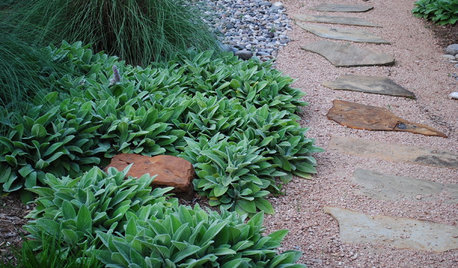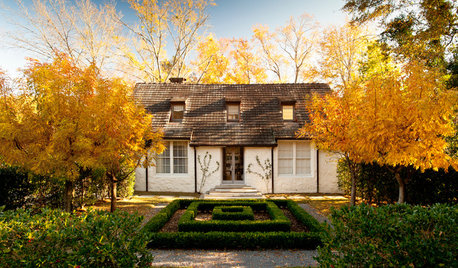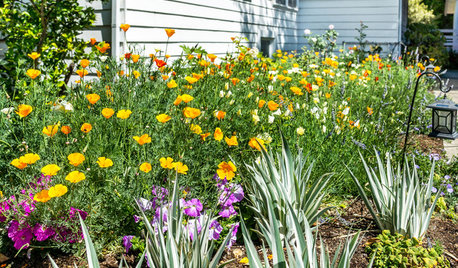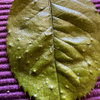Water useage in an arid state
richsd
10 years ago
Related Stories

GARDENING GUIDES10 Cold- and Heat-Tolerant Perennials and Shrubs for the Arid West
These flowering native plants shrug off the cold of winter and heat of summer while adding beauty to the drought-tolerant landscape
Full Story
LIFEThe Top 5 Ways to Save Water at Home
Get on the fast track to preserving a valuable resource and saving money too with these smart, effective strategies
Full Story
SAVING WATERLush Gardens With Low Water Needs
Drought tolerant doesn’t have mean spindly, brown and thorny
Full Story
GARDENING GUIDES6 Plants for Colorful Fall Foliage in the Water-Wise Western Garden
Try these colorful, drought-tolerant additions to your garden for a fall season filled with color
Full Story
LANDSCAPE DESIGNCalifornia Says Goodbye to the Sprawling Ornamental Lawn
New state rules will effectively limit turfgrass to 25 percent of the landscape in most new and renovated yards
Full Story
SAVING WATERXeriscape Gardens: How to Get a Beautiful Landscape With Less Water
Conserve water and make gardening much easier with the xeriscape approach’s 7 principles
Full Story
LANDSCAPE DESIGNHow to Move Water Through Your Landscape
Swales, underground pipes or a mix of both: There’s more than one way to distribute water in the garden
Full Story
GREEN BUILDINGJust Add Water: Rain Barrel Magic
Take your rainwater storage from practical to beautiful with a new breed of design-friendly rain barrels
Full Story
LANDSCAPE DESIGN10 Ideas for a Creative, Water-Conscious Yard
Check out these tips for a great-looking outdoor area that needs less water
Full Story
GREEN DECORATINGEasy Green: Big and Small Ways to Be More Water-Wise at Home
These 20 tips can help us all make the best use of a precious resource. How do you save water in summer?
Full Story







ChasingCenturies (Arizona 9b)
AZGardenQueen
Related Professionals
Graham Landscape Architects & Landscape Designers · Kapaa Landscape Architects & Landscape Designers · Cupertino Landscape Contractors · Englewood Landscape Contractors · Raleigh Landscape Contractors · San Carlos Park Landscape Contractors · Santa Maria Landscape Contractors · Vermilion Landscape Contractors · Sun Valley Landscape Contractors · Leander Carpenters · Miami Springs Carpenters · Needham Carpenters · Waltham Carpenters · Wentzville Carpenters · Evergreen Park CarpentersChasingCenturies (Arizona 9b)
AZGardenQueen
nc_crn
richsdOriginal Author
ChasingCenturies (Arizona 9b)
AZGardenQueen
kriklaf
grant_in_arizona
Fascist_Nation
nc_crn
graydog111
richsdOriginal Author
v8vega
newtoucan
tomatofreak
tomatofreak
tomatofreak
Fascist_Nation
tomatofreak
newtoucan
nc_crn
jaspermplants
richsdOriginal Author
jaspermplants
violetwest
jaspermplants
tomatofreak
captaininsano (9b/13) Peoria, AZ.
aztreelvr
richsdOriginal Author